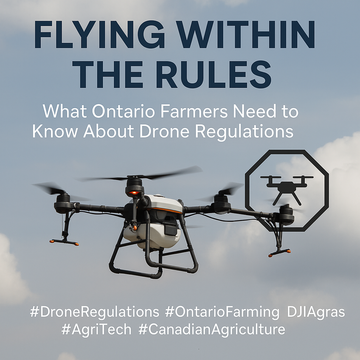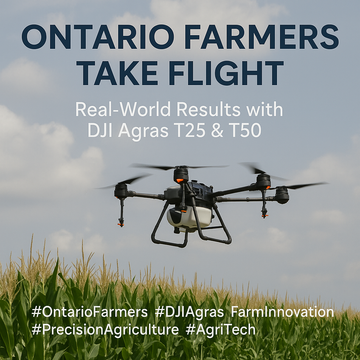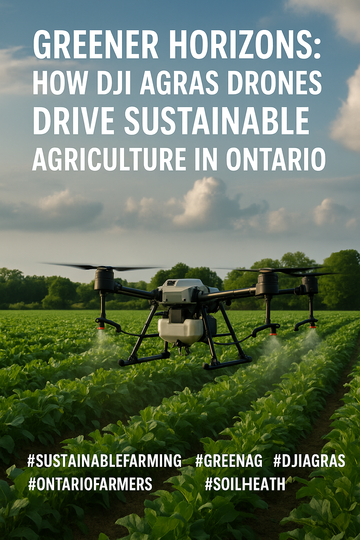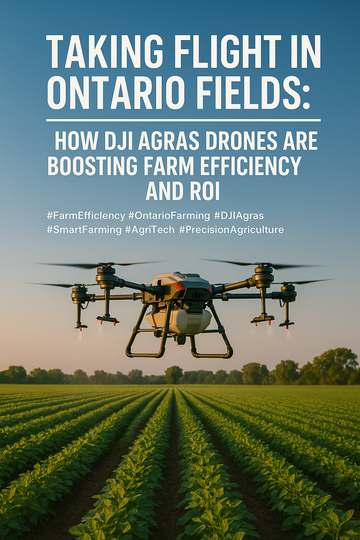Introduction
Agricultural drones are transforming farming across Ontario, but flying them isn’t as simple as powering up and taking off. Because DJI Agras models like the T25 and T50 weigh well over 25 kg, they fall into Transport Canada’s Advanced Drone Operations category and often require Special Flight Operations Certificates (SFOCs).
In addition, pesticide application in Canada is heavily regulated, with strict label directions and approved application methods. Let’s break down what Ontario farmers need to know before flying.
1. Pilot Certification in Canada
-
Basic vs. Advanced Certificate:
-
Drones over 25 kg cannot be flown with only a basic or advanced pilot certificate.
-
Farmers must apply for an SFOC to operate them legally.
-
-
Training: Farmers are encouraged to complete ground school and flight review training to prepare for both the exam and safe field operations.
2. Special Flight Operations Certificate (SFOC)
Because Agras drones exceed the 25 kg weight limit:
-
SFOC is mandatory for all flights.
-
Farmers must submit an application to Transport Canada, outlining:
-
Intended operations (e.g., spraying pesticides, spreading fertilizer).
-
Airspace location and safety procedures.
-
Maintenance and emergency protocols.
-
-
Approval can take weeks to months, so early application is key before planting season.
3. Pesticide Regulations and Label Limitations
In Canada, pesticides are regulated by the Pest Management Regulatory Agency (PMRA) under Health Canada.
-
Labels are the law: Farmers must follow product labels exactly—if aerial application (including drones) is not listed, it cannot legally be used.
-
Some products may require special aerial-use registration before drone spraying is permitted.
-
Using drones without label approval risks fines and invalidates crop insurance coverage.
4. Airspace and Operational Rules in Ontario
-
Maintain safe distances from people, livestock, and infrastructure.
-
Respect controlled airspace, especially near airports and heliports.
-
Keep up-to-date with NAV CANADA advisories and local restrictions.
5. Why Compliance Matters
Non-compliance can lead to:
-
Fines of up to $15,000 for individuals and $25,000 for corporations.
-
Voided insurance claims.
-
Legal liabilities if damage or injury occurs.
On the other hand, compliant drone operations open doors for:
-
Government funding or subsidy programs.
-
Partnerships with co-ops and agribusinesses.
-
A stronger reputation for sustainable, innovative farming.
Conclusion
DJI Agras drones can unlock huge efficiency gains for Ontario farmers—but only when flown within the rules. By securing the right pilot training, applying for an SFOC, and respecting pesticide label laws, farmers can harness drone technology without regulatory risks.
#DroneRegulations #OntarioFarming #DJIAgras #AgriTech #CanadianAgriculture #SmartFarming #FarmCompliance






